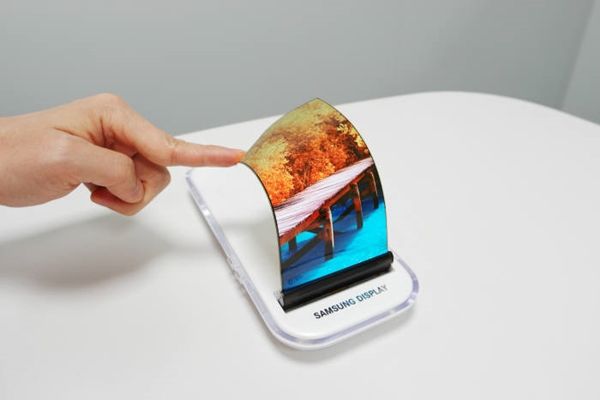Samsung Display and LG Display are contemplating about introducing ALD (Atomic Layer Deposition) technology o flexible OLED thin-film encapsulation process. They both have partnered up with their partners for equipment and verifying ALD equipment internally. Because effect of protecting organic materials from oxygen and water increases when ALD technology is used, life and performance of flexible OLED panels can increase overall.
According to an industry on the 22nd, Samsung Display and LG Display are preparing to introduce ALD technology to flexible OLED processes. Jusung Engineering, WONIK IPS, AP System, and TES have ALD technologies and equipment for displays. LG Display already finished doing research on ALD and has started development to introduce ALD technology to flexible OLED process while Samsung Display is working fast on introducing ALD technology.
Although both companies finished doing R&D on ALD technology, they are feeling about possibilities of actually introducing ALD technology as they are actively investing into flexible OLED facilities. They finished doing R&D and have entered a development stage to commercialize ALD technology.
Weakness of OLED, which is an organic material, is that it is weak against water and oxygen. To protect OLED, thin films are overlaid on top of OLED many times to protect OLED from water and oxygen. Although number of thin films that are used to protect OLED is different between panel manufacturers, they use Vitex method that covers OLED with organic thin film and inorganic thin film alternatively about 3 to 5 times.
Generally PECVD (Plasma-Enhanced Chemical Vapor Deposition), sputtering, and ALD technology can be used for inorganic thin-film encapsulation while Kateeva’s inkjet printing technology is used for organic thin-film deposition. Both Samsung Display and LG Display use PECVD technology for forming inorganic thin films.

A reason why they are recently thinking about introducing ALD technology instead of PECVD is because importance of improving life and performance of flexible OLEDs has gotten bigger. Fact that productivity is dropping while demands for flexible OLEDs are increasing is also another problem.
ALD technology is one of CVD (Chemical Vapor Deposition). It injects raw material including ALD metals and responsive gas alternatively and forms thin films in atomic level. It can turn fine thin films with high uniformity into ones with larger areas. If it is used with MLD (Molecule Layer Deposition) technology that forms organic materials in molecular level, many layers of barriers that protect OLEDs from water and oxygen can be formed even in low temperature.
Strengths of ALD technology when it is applied to displays are that it can minimize impurities and form thin films with same thickness. Because ALD technology implements thin films with high quality, effect of protecting OLEDs from water and oxygen increases. If thicknesses of inorganic thin films are implemented in different nanometers and laminated alternatively, total thin film thickness and water vapor transmission rate can be minimized.
Fact that ALD technology can overcome limitations of current CVD method by implementing variety of formations of thin films is also seen as ALD’s strength.
Introduction of ALD is very active within semiconductor industries due to precise processes. However display industries had been hesitant about introducing ALD since it costs more than PECVD and there are problems regarding application onto large areas and speed of deposition. However possibility of actual introduction has risen as problems were recently solved at a constant level.
“Although ALD and PECVD cannot be compared by generalization, speed of ALD deposition is approximately 10 times slower than PECVD.” said a representative for an industry. “Although low productivity from low deposition speed and application onto large areas are the biggest obstacles, possibility of actually introducing ALD technology is something to think about if it can form thin films with high quality even thinner.”
Staff Reporter Bae, Okjin | withok@etnews.com